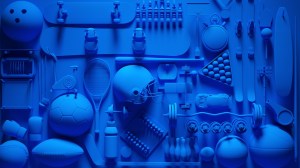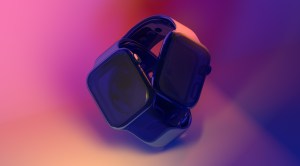The Latest Innovations in Modern Wearable Technology Trends
Wearable technology has come a long way in recent years, with new and exciting innovations constantly emerging. From fitness trackers to smartwatches, these devices have become an integral part of our daily lives. In this article, we will explore the latest trends in modern wearable technology and how they are revolutionizing various industries.
Health and Fitness: Taking Tracking to the Next Level
One of the most significant trends in modern wearable technology is its increasing integration into health and fitness applications. Wearable devices are now equipped with advanced sensors that can monitor heart rate, sleep patterns, and even blood oxygen levels. This valuable data allows users to track their overall health and make informed decisions about their lifestyle choices.

Moreover, many wearable devices now offer personalized coaching and guidance based on the user’s data. For example, some smartwatches can analyze workout performance and provide real-time feedback on form or technique. These features help users optimize their workouts, prevent injuries, and achieve their fitness goals more effectively.
Smart Clothing: Fashion Meets Functionality
Smart clothing is another exciting trend in wearable technology that combines fashion with functionality. Unlike traditional wearables that are worn as accessories or attached to clothing items, smart clothing integrates technology directly into the fabric itself.
For instance, there are now shirts that can monitor heart rate or track breathing patterns without the need for additional devices. Some smart shoes come equipped with sensors that provide real-time feedback on running technique or detect changes in gait to prevent injuries.
Apart from health-related features, smart clothing also offers innovative solutions for everyday problems. For example, there are jackets with built-in heating elements or pants that adjust their insulation based on external temperatures. These advancements not only enhance comfort but also improve overall functionality.
Virtual Reality (VR) and Augmented Reality (AR) Integration
Virtual reality (VR) and augmented reality (AR) have gained significant traction in recent years, and wearable technology is playing a crucial role in their widespread adoption. VR headsets, such as the Oculus Rift or HTC Vive, provide immersive experiences in gaming, education, and even therapy.
On the other hand, AR glasses like Google Glass or Microsoft HoloLens overlay digital information onto the real world. This technology has applications in various industries, including manufacturing, healthcare, and retail.
Wearable devices are now being developed to seamlessly integrate with VR and AR technologies. For instance, there are smart gloves that allow users to interact with virtual objects or smart glasses that provide a heads-up display of relevant information during tasks.
Workplace Safety: Protecting Employees with Wearable Devices
Workplace safety is a top priority for organizations across industries. Wearable technology has emerged as a valuable tool to enhance employee safety and prevent accidents. Devices such as smart helmets or vests equipped with sensors can monitor environmental conditions and detect potential hazards.
For example, some wearable devices can measure air quality levels or detect harmful gases in industrial settings. In case of emergencies or accidents, these devices can automatically send alerts to supervisors or emergency responders.
Furthermore, wearables can also help prevent workplace injuries by promoting proper ergonomics and posture. Some devices provide feedback on body positioning while lifting heavy objects or alert workers when they exceed safe limits of movement.
In conclusion, modern wearable technology trends continue to push the boundaries of innovation across various industries. From health and fitness tracking to virtual reality integration and workplace safety enhancements, these devices offer countless opportunities for improved efficiency and personalized experiences. As technology continues to advance rapidly, we can expect even more exciting developments in the future of wearable technology.
This text was generated using a large language model, and select text has been reviewed and moderated for purposes such as readability.





